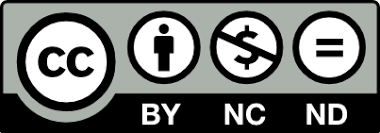LEARNER CORPUS PROFILES: LEXICAL PECULIARITIES OF GEORGIAN EFL STUDENTS
Keywords:
learner corpus, lexis, language production, pedagogy, data-driven learningAbstract
This paper focuses on the usability of learner corpus in foreign language research. Teachers, lexicographers and researchers use learner corpus data to measure the most fundamental aspect of second/foreign language knowledge – lexical profiles of the learners. Learner corpora provide a mirror for the learners’ language competence. The paper aims to analyze an ongoing project on the learner corpus of Georgian EFL (English as a foreign language) university students. The language productions that make up our yet ‘baby’ learner corpus include written texts. The reason for bringing learner productions into a corpus rather than examining them individually is the desire to arrive at generalizable findings about language acquisition, i.e. which words can the learners produce and with what degree of appropriateness. Our research seeks to answer the following questions: a) what kind of lexical behaviour is represented in the learner corpus data, and b) what is the potential of giving learners/teachers access to the learners' data? The study and the quantitative information described in the work reflect the characteristics of learner English in terms of part-of-speech distribution and collocation usage. The usefulness and advantages of the corpus-based approach will be demonstrated by employing learner corpus-based activities that can be implemented in an educational environment.
Full Text (PDF)
References
Altenberg, B., & Granger, S. (2001). The grammatical and lexical patterning of MAKE in native and non-native student writing. Applied linguistics, 22(2), 173-195.
Anthony, L. (2022). AntConc (Version 4.1.0) [Computer Software]. Tokyo, Japan: Waseda University. Available from https://www.laurenceanthony.net/software
Belz, J. A., & Vyatkina, N. (2008). The pedagogical mediation of a developmental learner corpus for classroom-based language instruction.
Brezina, V., Weill-Tessier, P., & McEnery, A. (2021). #LancsBox v. 6.x. [software package]
Cobb, T. (2007). Computing the vocabulary demands of L2 reading. Language Learning & Technology, 11(3), 38-63.
Granger, S., & Tyson, S. (1996). Connector usage in the English essay writing of native and non‐native EFL speakers of English. World Englishes, 15(1), 17-27.
Granger, S., Gilquin, G., & Meunier, F. (Eds.). (2015). The Cambridge handbook of learner corpus research. Cambridge University Press.
Hasselgren, A. (1994). Lexical teddy bears and advanced learners: A study into the ways Norwegian students cope with English vocabulary. International Journal of Applied Linguistics, 4(2), 237-258.
Johns, T. (2002). Data-driven learning: The perpetual challenge. In Teaching and learning by doing corpus analysis (pp. 105-117). Brill.
Kilgarriff, A., Rychly, P., Smrz, P., & Tugwell, D. (2004). Itri-04-08 the sketch engine. Information Technology, 105(116), 105-116.
McEnery, T., Xiao, R., & Tono, Y. (2006). Corpus-based language studies: An advanced resource book. Taylor & Francis.
O'Sullivan, Í., & Chambers, A. (2006). Learners’ writing skills in French: Corpus consultation and learner evaluation. Journal of second language writing, 15(1), 49-68.
Rankin, T., & Schiftner, B. (2011). Marginal prepositions in learner English: Applying local corpus data. International Journal of Corpus Linguistics, 16(3), 412-434.
Reder, S., Harris, K., & Setzler, K. (2003). The multimedia adult ESL learner corpus. TESOL Quarterly, 37(3), 546-557.
Selinker, L., & Gass, S. M. (2008). Second language acquisition. Lawrence Erlhaum Ass.












